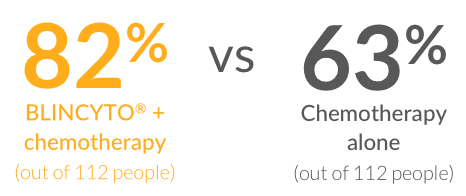Chemotherapy: A treatment that uses
one or more drugs to either kill the cancer cells or stop them from
dividing.2
Stem cell transplant: A procedure for
replacing the cells of the bone marrow harmed by disease with healthy
cells.2
Targeted therapy: A treatment that
identifies and attacks certain types of cancer cells with less harm to
normal cells. Some block specific actions of cancer cells, while
others help the immune system kill cancer cells.2,4
CAR T-cell therapy: A type of
immunotherapy in which a person’s T cells (a type of cell in the
immune system) are removed from their body, changed in the laboratory
to recognize and attack cancer cells, and then given back to the
person through an intravenous infusion. The process for CAR T-cell
manufacturing can take up to three weeks.2,5





